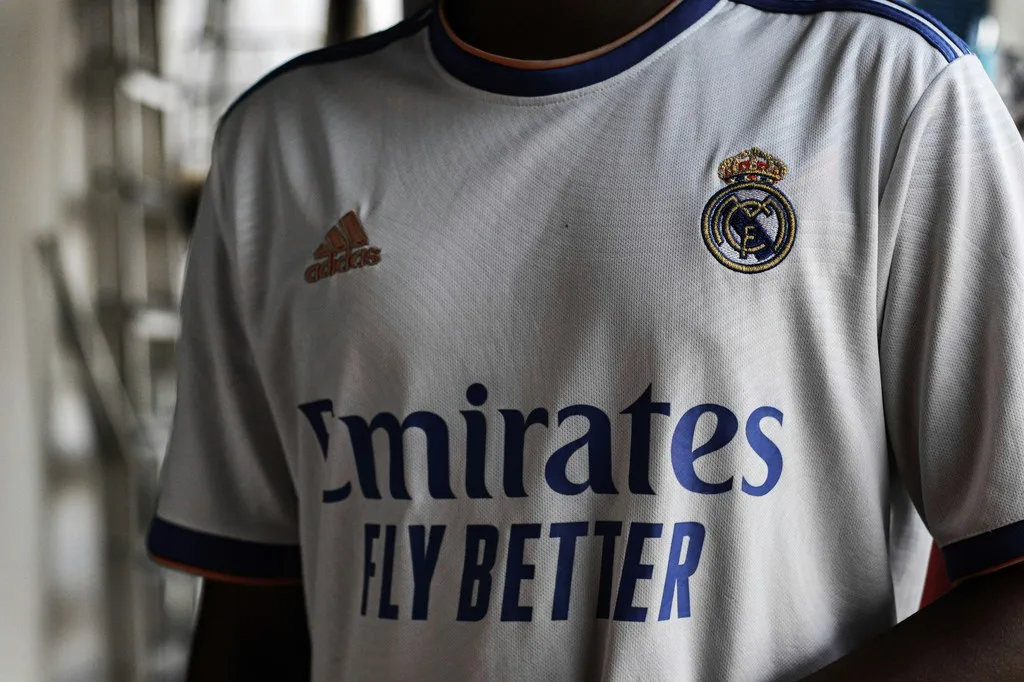
Unveiling the Story Behind the Jerseys
The Tour de France jerseys hold a significant place in the heart of cycling enthusiasts, representing tradition, pride, and excellence. Each jersey tells a unique story that adds to the allure of this prestigious race.
A Colorful Tradition
Origins and evolution
The history of the Tour de France jerseys dates back to the inception of the race in 1903. Initially, there was no clear indicator to identify the race leader. The introduction of distinct jerseys revolutionized this aspect, providing a visual representation of leadership within different categories. Over time, these jerseys have evolved, embracing new designs and technologies while preserving their symbolic significance.
The Tour de France jerseys are not merely garments; they embody a rich legacy that has shaped the identity of the race over decades. From humble beginnings to becoming iconic symbols of athletic prowess, these jerseys have stood as testaments to tradition and innovation.
More Than Just a Shirt
Symbolism and prestige
Each jersey represents an esteemed classification within the race, signifying excellence in various aspects such as overall leadership, sprinting abilities, climbing prowess, and promising young talent. The colors themselves carry deep symbolism, reflecting the values and aspirations inherent in competitive cycling.
The yellow jersey epitomizes general classification supremacy; it symbolizes honor and dominance on every stage of this grueling competition. Similarly, the green jersey celebrates speed and agility with its association with sprinters who excel in intermediate sprints and stage finishes.
The polka dot jersey pays homage to climbers conquering daunting mountain terrains with their unwavering determination. Lastly, the white jersey recognizes promising young riders who exhibit exceptional potential for future triumphs.
These vibrant hues extend beyond mere fabric; they encapsulate tales of resilience, strategy, and triumph on one of cycling’s grandest stages—the Tour de France.
The Prestigious Yellow Jersey: The Race Leader’s Pride
The fabled yellow jersey stands as the iconic symbol of leadership and excellence in the Tour de France. Its rich history and profound significance have inspired songs, films, and books, capturing the imagination of cycling enthusiasts worldwide.
The Icon of the Tour
The yellow jersey, also known as maillot jaune, has been an integral part of the Tour de France since 1919. Henri Desgrange, the tour manager at the time, introduced this distinctive garment to designate the overall leader of the race. It is said that l’Auto, a prominent sports newspaper that sponsored the race, was printed on yellow paper, leading to the choice of color for the jersey. This tradition has endured over a century and continues to be one of the most sought-after accolades in professional cycling.
Earning the Yellow
To don the illustrious yellow jersey, a rider must exhibit exceptional prowess across multiple stages, demonstrating their strength and endurance in both flat and mountainous terrains. The general classification leader earns this esteemed garment by accumulating the lowest overall time throughout all completed stages. This demanding feat requires not only physical prowess but also strategic acumen to navigate through varying challenges posed by different stages.
Memorable Moments in Yellow
The journey to wearing the yellow jersey is marked by legendary performances that have etched indelible memories in Tour de France history. From daring breakaways to triumphant finishes on challenging mountain climbs, riders who have adorned this prestigious garment have showcased unparalleled determination and skill. These moments stand as testaments to human resilience and athletic excellence, inspiring future generations of cyclists to pursue their own aspirations on cycling’s grandest stage.
The Green Jersey: Sprinting to Glory
The green jersey, also known as maillot vert, is an emblem of speed and endurance, recognizing the best sprinter in the Tour de France. This vibrant garment symbolizes the exhilarating art of sprinting and the thrill of conquering flat terrains with remarkable agility.
The Sprinter’s Dream
The green jersey is a coveted prize that embodies the aspirations of sprinters aiming for glory on the grand stage of the Tour de France. It represents not only raw speed but also consistent performance across various stages, showcasing the rider’s ability to surge ahead in thrilling sprints and conquer intermediate points with finesse.
The Path to Green
Earning the green points jersey requires a combination of strategic prowess and unwavering determination. Riders accumulate points based on their performance at designated intermediate sprints and stage finishes. The intense competition for these valuable points demands calculated tactics, requiring riders to exhibit exceptional speed and tactical acumen to outmaneuver their rivals.
Green Jersey Greats
Over the years, the green jersey has adorned legendary riders who have left an indelible mark on the history of sprinting in professional cycling. Noteworthy winners have showcased unparalleled speed, tenacity, and a keen understanding of race dynamics. Their triumphs stand as testaments to the enduring allure of sprinting and its pivotal role in shaping Tour de France narratives.
The Polka Dot Jersey: King of the Mountains
The Polka Dot Jersey holds a special place in the heart of the Tour de France, representing the ultimate challenge of conquering the formidable mountains. As riders ascend to breathtaking heights and navigate treacherous terrains, they vie for this prestigious garment that symbolizes their mastery of the mountains.
Climbing to the Top
The challenge of the mountains
The Tour de France’s mountain stages present a unique set of challenges for riders, combining breathtaking vistas with grueling ascents. The steep gradients and winding roads demand unwavering determination and exceptional physical prowess from cyclists as they navigate through these awe-inspiring landscapes. The polka dot jersey represents one of the single greatest competitions within the tour, with dramas played out among the clouds and tense stand-offs. The steep gradients benefit the pure climbers in the peloton and give them more of an advantage against the likes of Froome, potentially resulting in a more exciting battle between the GC and mountain challengers.
Spots of Honor
Earning the polka dots
Earning the polka dot jersey is a testament to a rider’s ability to conquer some of cycling’s most daunting terrains. Points are awarded based on reaching designated mountain summits first, showcasing not only raw strength but also strategic acumen in pacing oneself for these arduous climbs. As riders push their limits amidst stunning natural backdrops, each ascent becomes a battleground for securing those precious polka dot points.
Legendary Climbers
Heroes of the hills
The polka dot jersey has adorned legendary climbers who have left an indelible mark on Tour de France history. These riders have demonstrated unparalleled tenacity and skill as they conquered challenging mountain passes, etching their names into cycling lore. Their triumphs serve as inspirations for future generations, highlighting not only their physical prowess but also their mental fortitude in overcoming some of cycling’s most formidable obstacles.
The White Jersey: Celebrating the Young Guns
As the Tour de France unfolds, it not only showcases the prowess of seasoned riders but also celebrates the promise of young talent through the coveted white jersey.
The Future of Cycling
Criteria for the white jersey
The white jersey holds a special place in the hearts of cycling enthusiasts as it honors the best young rider in the general classification. To be eligible for this esteemed accolade, a rider must be under 26 years of age and demonstrate exceptional performance, surpassing their peers within the same age group. This recognition not only celebrates youthful potential but also serves as a testament to the evolving landscape of professional cycling, where emerging talents shape the future narratives of this iconic race.
Rising Stars
Past winners and their journeys
The journey to claiming the white jersey is marked by tales of determination and resilience, with past winners etching their names into Tour de France history. These rising stars have defied expectations and showcased remarkable skill, navigating through challenging terrains and demonstrating their ability to excel amidst intense competition. Their journeys serve as inspirations for aspiring young riders, highlighting not only their physical prowess but also their strategic acumen in vying for this prestigious honor.
The white jersey has been an emblem of hope and aspiration for promising cyclists, signifying not just individual accomplishments but also the collective evolution of professional cycling on one of its grandest stages—the Tour de France.
Wrapping Up the Rainbow of the Tour de France
A Palette of Passion
The Tour de France jerseys, with their vibrant hues and rich symbolism, infuse the race with a palpable sense of passion. Each jersey represents not just a garment but a testament to the dedication and excellence displayed by riders across the stages. From the iconic yellow jersey to the polka dot jersey adorning the best climbers, these garments paint a vivid picture of perseverance and triumph on cycling’s grandest stage.
The impact of these jerseys extends beyond mere attire; they serve as beacons of inspiration for both riders and fans alike. The yellow, green, polka dot, and white jerseys encapsulate the essence of competition, camaraderie, and unwavering determination that define the entire Tour de France experience. As riders don these esteemed garments throughout the race, they carry with them not only individual aspirations but also the collective spirit of this legendary event.
The Legacy Continues
Looking forward to future races, the legacy of these iconic jerseys is set to endure, shaping narratives that will captivate audiences for generations to come. As new champions emerge to claim these prestigious garments, they will inscribe their names into cycling lore while carrying on the traditions and values embodied by each jersey.
The rainbow of colors adorning cyclists in the Tour de France represents more than just competition; it signifies a celebration of human resilience, athletic prowess, and enduring passion for this historic race.
See Also
Essential Elements in the Latest French Soccer Jersey Designs
Exploring the Creation of the Latest US Men’s National Team Jerseys
Selecting the Ideal Black Soccer Jersey
Creating Your Own Personalized Soccer Jerseys: A Detailed Guide




